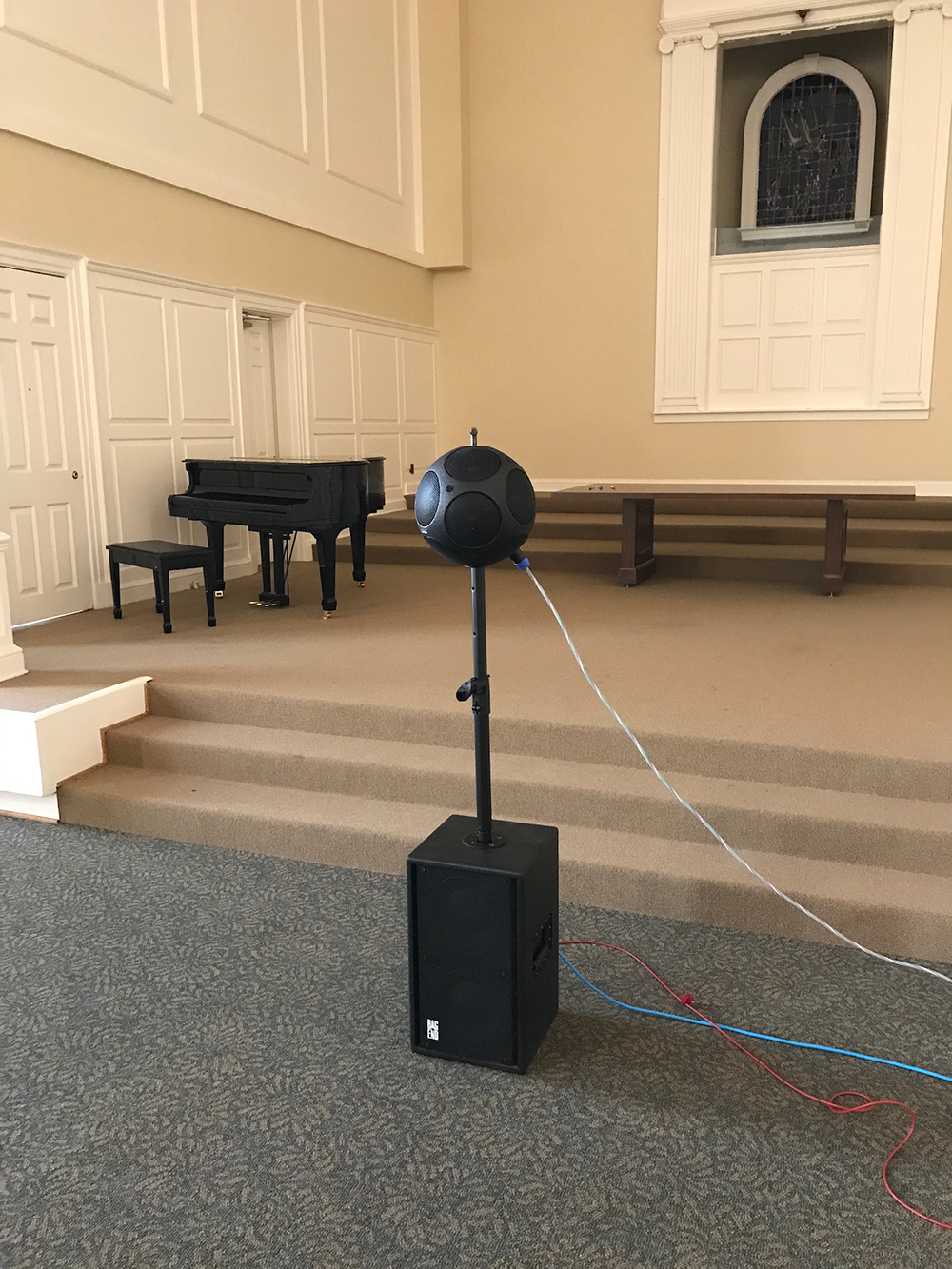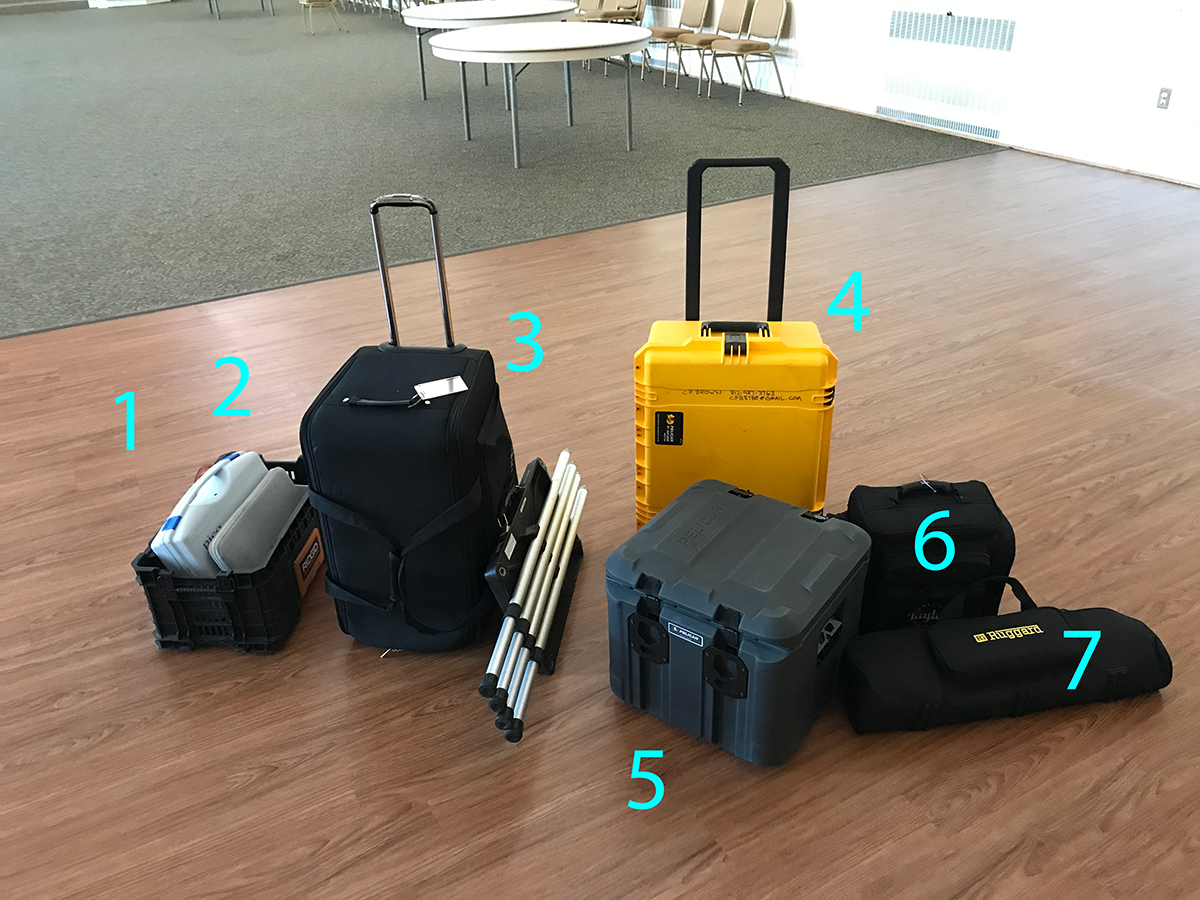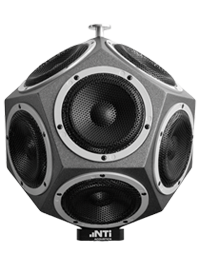by Pat Brown
Prior to designing a sound system, room acoustics testing needs to be done. Pat Brown answers the question, Do I need a sub when testing the acoustics in the room? You will also learn what Pat uses in his test kit.
The dependence of a sound system’s performance on the room’s acoustics cannot be overstated. Sooner or later, many audio practitioners get involved with room acoustics testing. When this happens they immediately encounter a fundamental question:
What loudspeaker?
This can be rephrased into an even more fundamental question:
What directivity?
This question was answered long ago by the acoustics pioneers of the last century. The reference source should be omnidirectional. There are many reasons, but the main one is that once you introduce directivity you have introduced frequency-dependence and size-dependence. When the room is measured using an omni source, the effects of directivity can be factored in by computation. This is where room modeling programs excel.
Enter, the “Dodec”
As the quest for a perfect “point source” continues, most have settled on the 12-sided dodecahedron as an adequate device for room surveys. Excellent commercial models are available, as are numerous “build your own” methods.
A shortcoming that all dodecs share is the lack of low frequency output. The transducers must be small-ish to pack tight enough to achieve reasonable omnidirectivity into the 8 kHz octave band. Six inches or smaller cone diameters are typical. This establishes a high pass response of around 100 Hz, especially when a high sound power level is needed (e.g. large rooms). For that reason, it is often necessary to complement the dodec with a subwoofer when the lower octave bands need to be excited, such as when evaluating a room’s modal response.
Sub, or No Sub?
A major decision that I must make for each room I survey is “Sub or no sub?” From the geek side of me the answer is nearly always “Sub!” This adds considerable time and complexity to the measurement session. Unfortunately, there is no other way to get low frequency data for a space.
I have used numerous subs over the years. My current “go to” is the Bag End PD10E (Photo 1). This is a compact device with two 10-inch transducers. It is compact, internally-powered, and includes the signal processing necessary for the extraordinary LF extension. The high pass response is about 8 Hz! The acoustic output is adequate for keeping up with my Outline Globe Source omni loudspeaker, allowing omnidirectional full-range room excitation.
The Kit
Efficient room acoustics testing requires some preparation. This includes both hardware and software. My room testing “kit” is shown in Photo 2. It is built around an Ambisonic microphone and recorder. This is complemented by software apps GratisVolver Pro™, ReflPhinder™, and Acoustica™.
The kit has it’s own shelf in the shop, and can be loaded into a vehicle in only a few minutes.
And yes, the kit includes a package of balloons and a battery-powered recorder in case all else fails. pb

Photo 1 – The Globe Source Radiator and PD10E sub. The GS is driven through four wire pairs from four amplifier channels. The PD10E is internally-powered and processed. It gets a low passed signal from the DSP along with AC power.

Photo 2 – The room survey kit includes:
1 – Ambisonic microphone / 4-channel recorder
2 – WindowsTM PC
3 – Subwoofer
4 – DSP/Amplifier
5 – Omni Loudspeaker
6 – Gadget Bag (audio meter, laser range finder, gaff tape, balloons, and Sharpies)
7 – Stands

